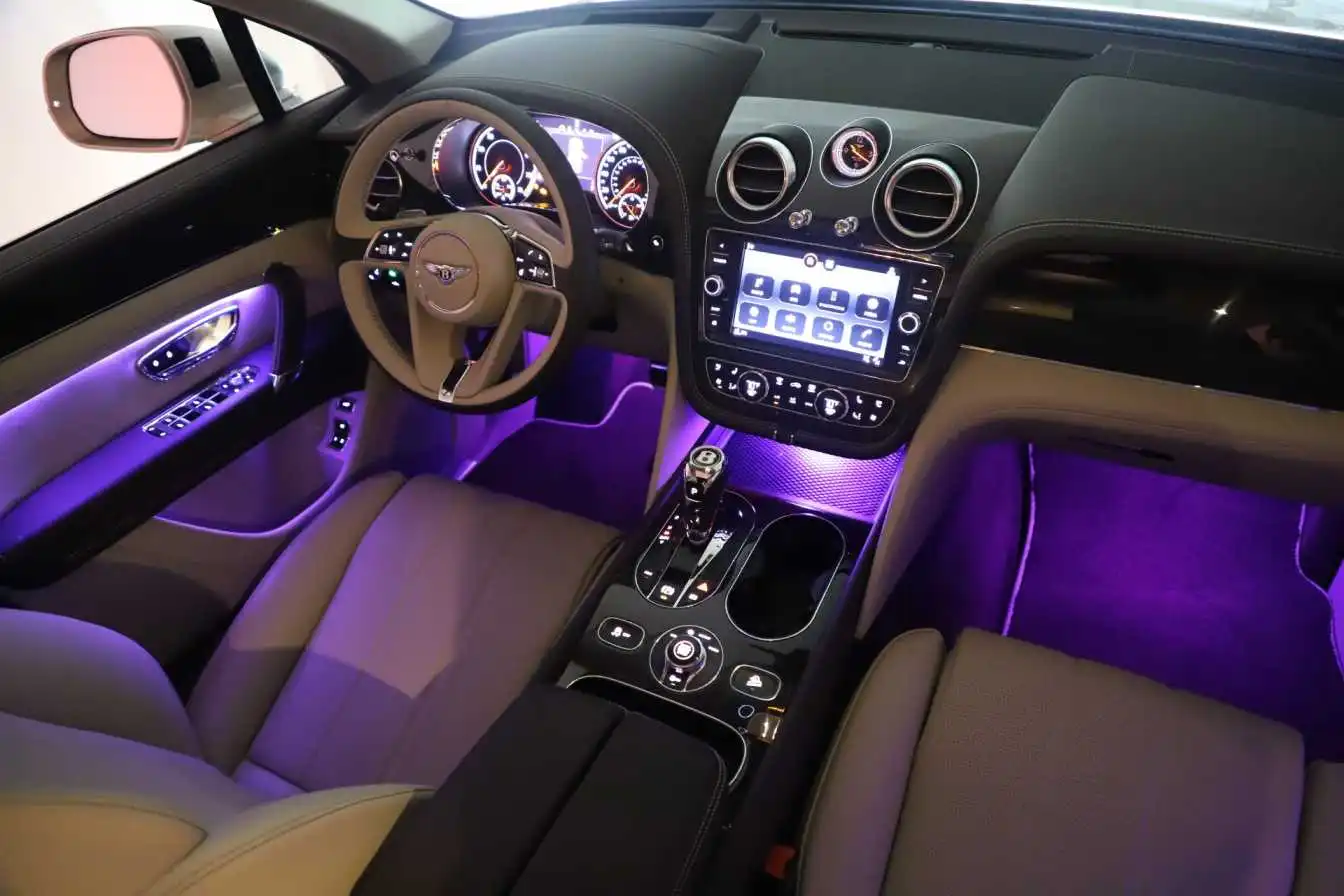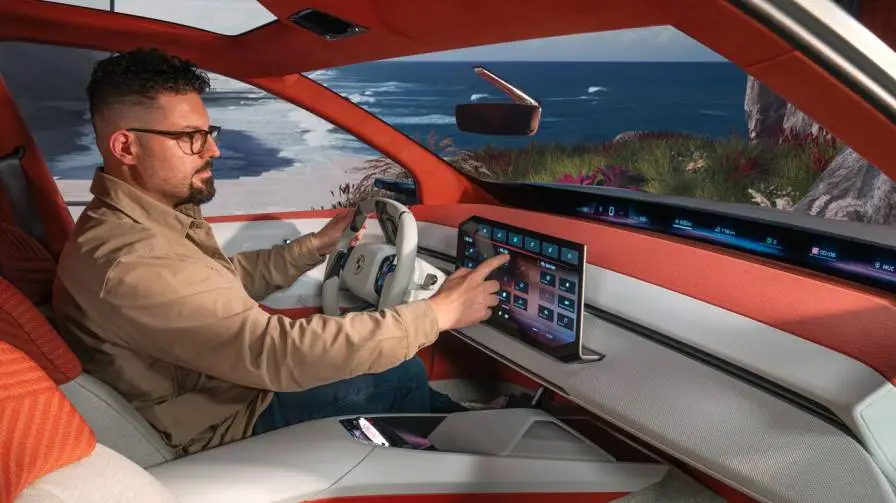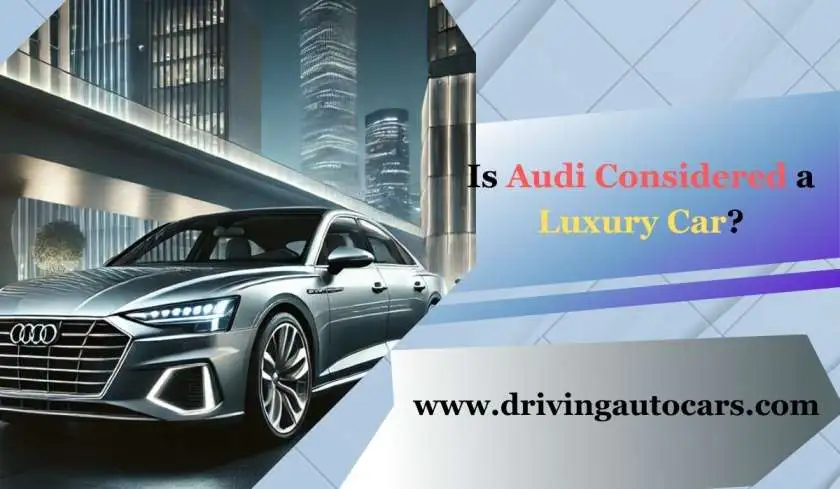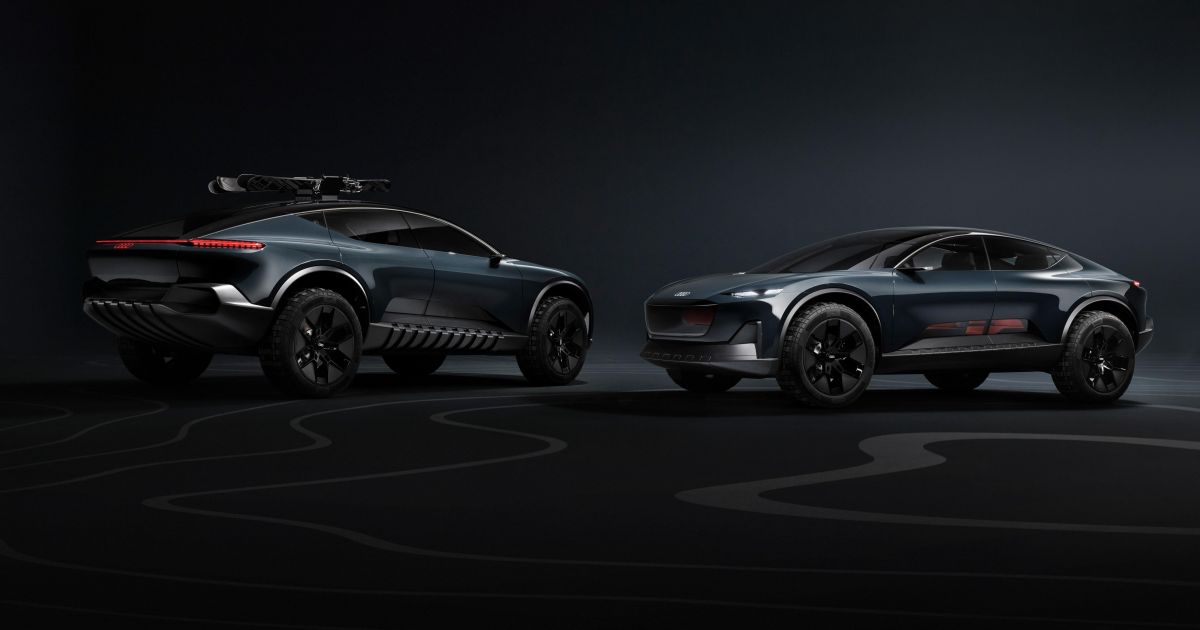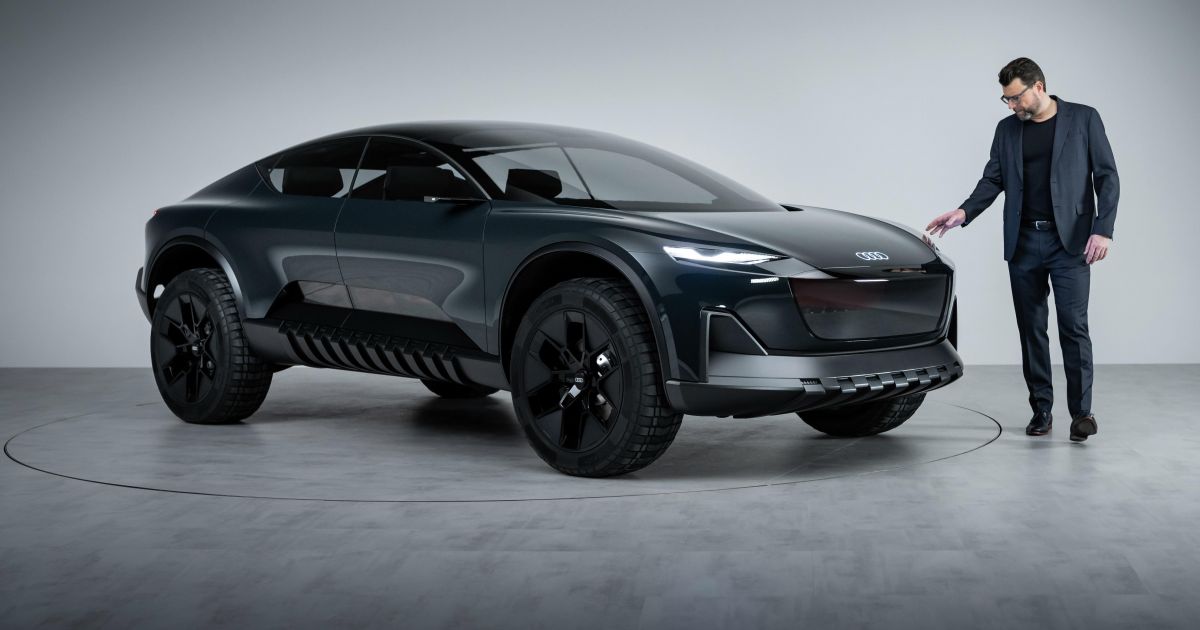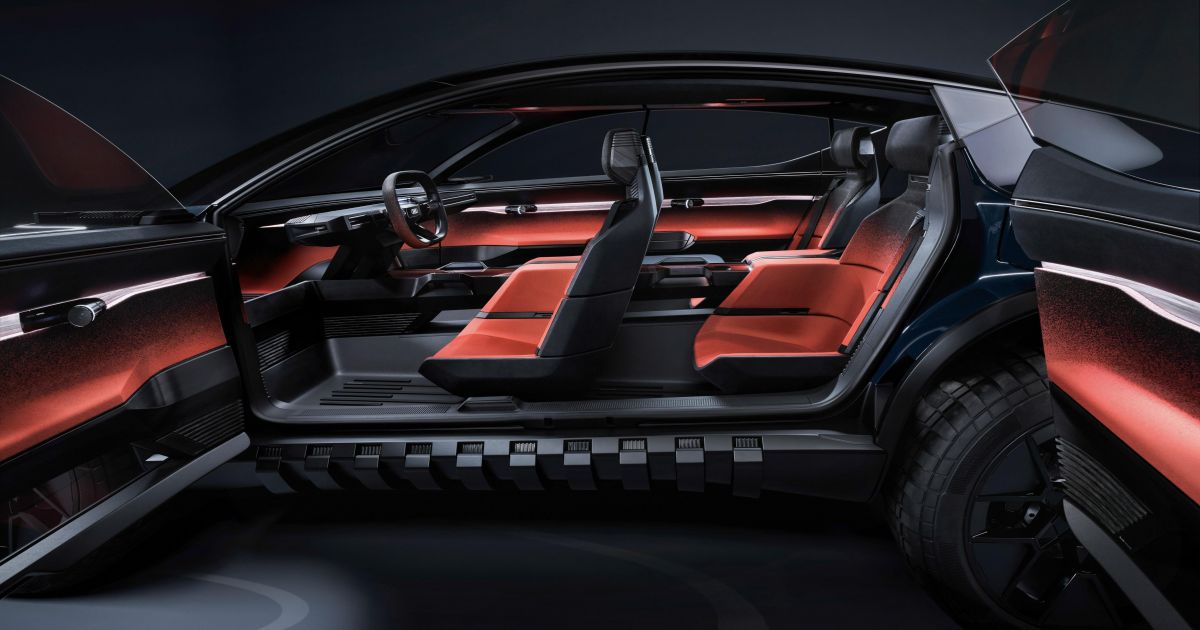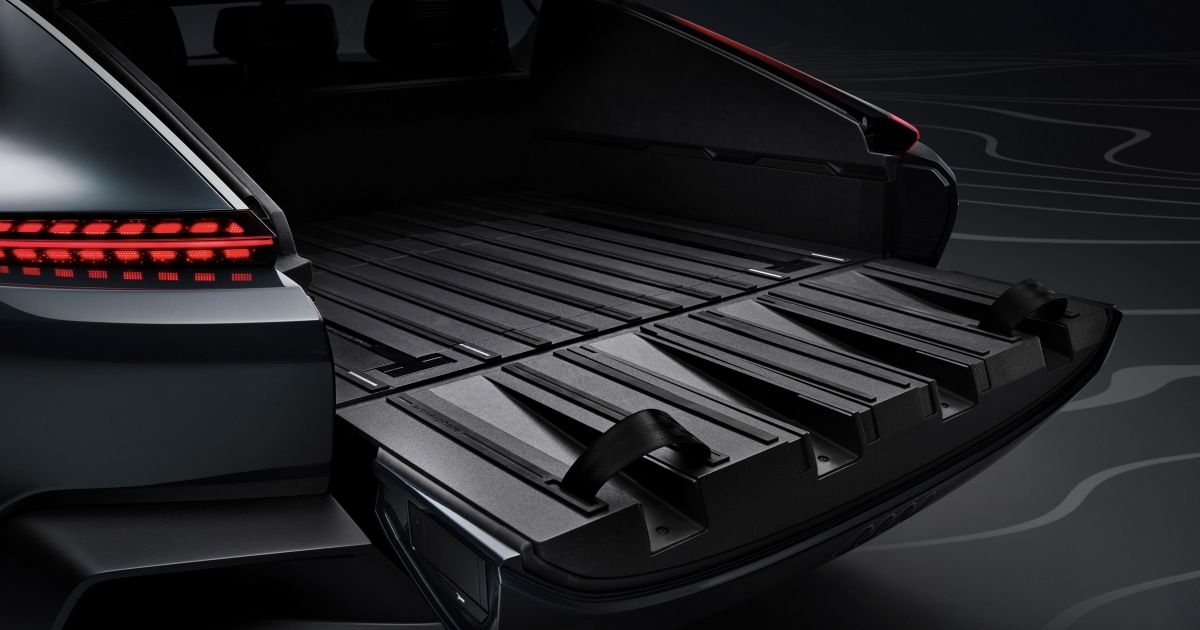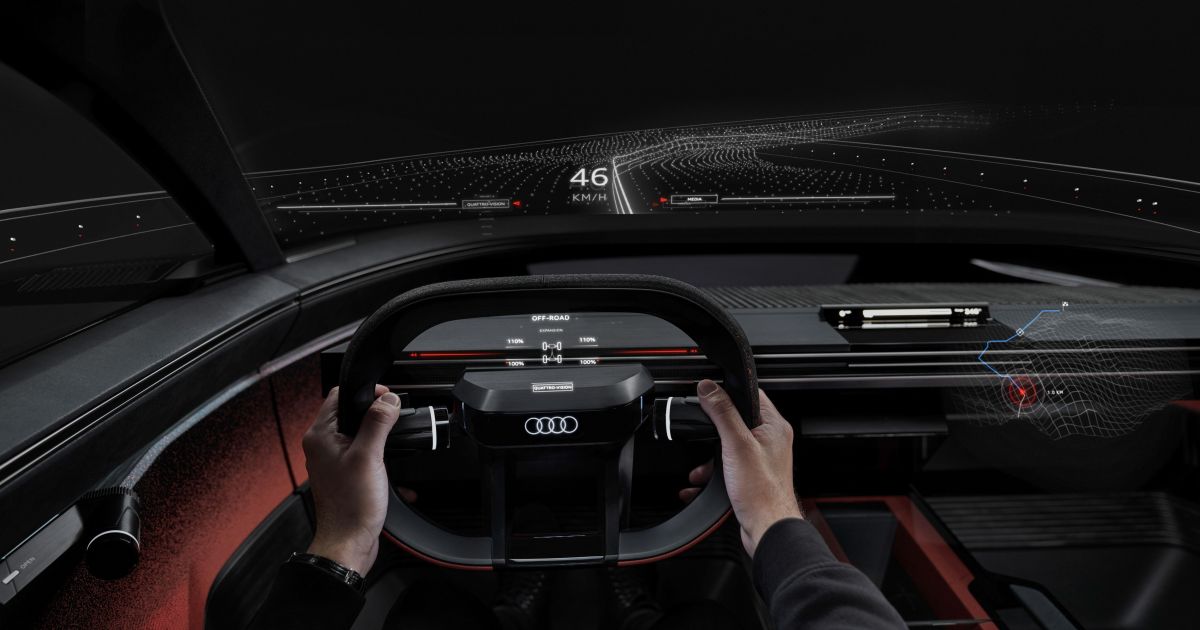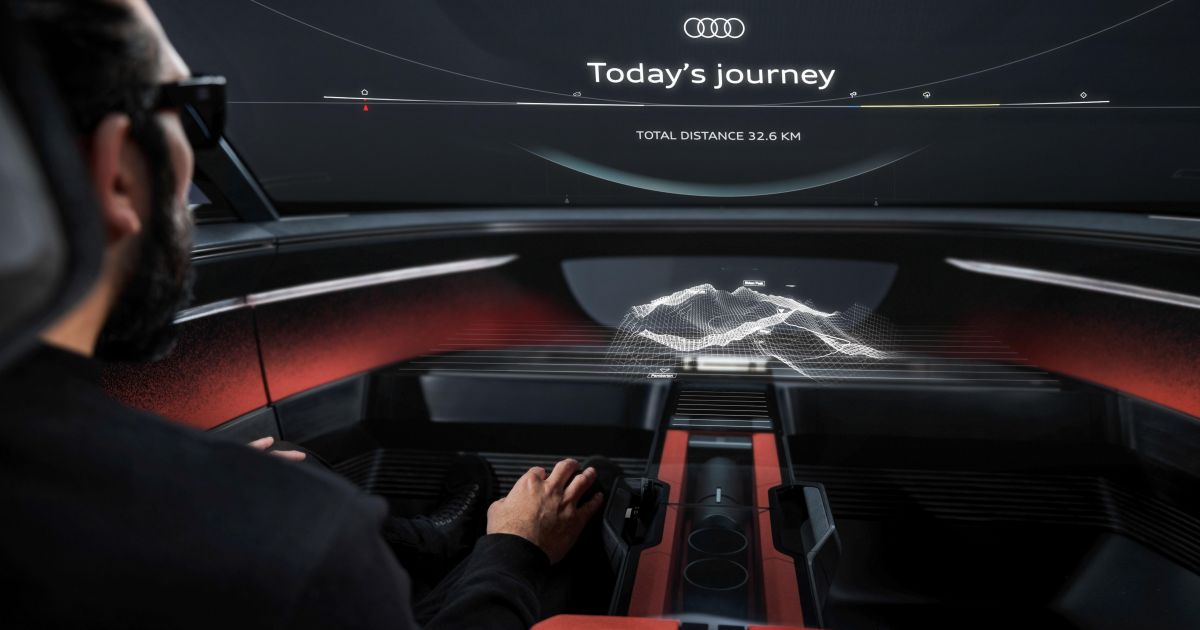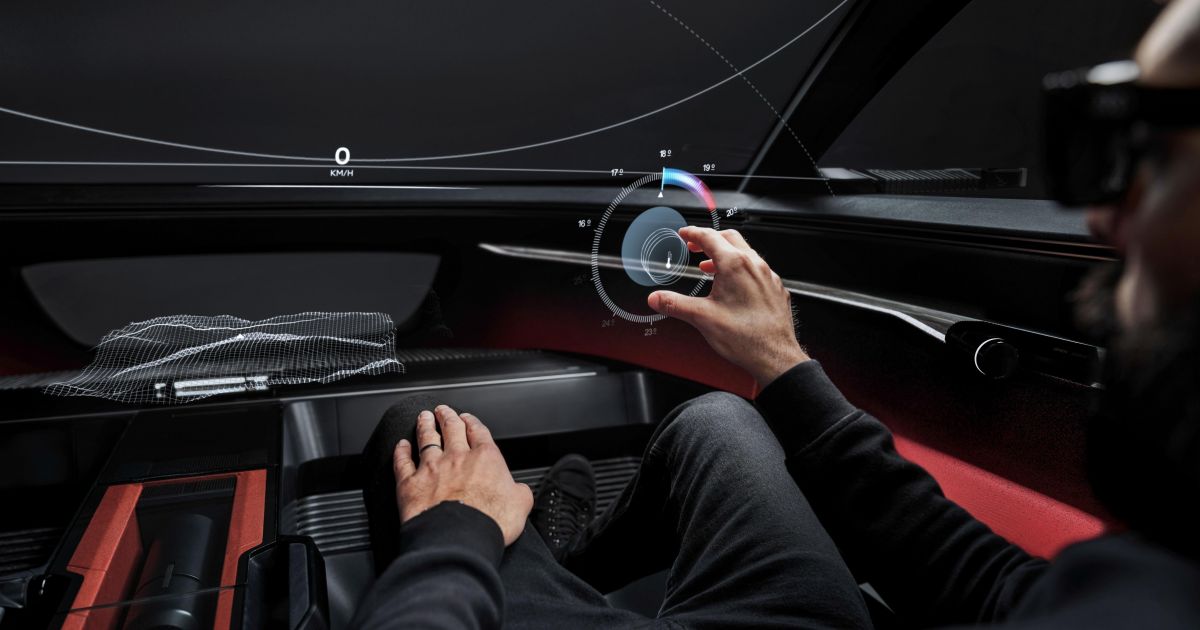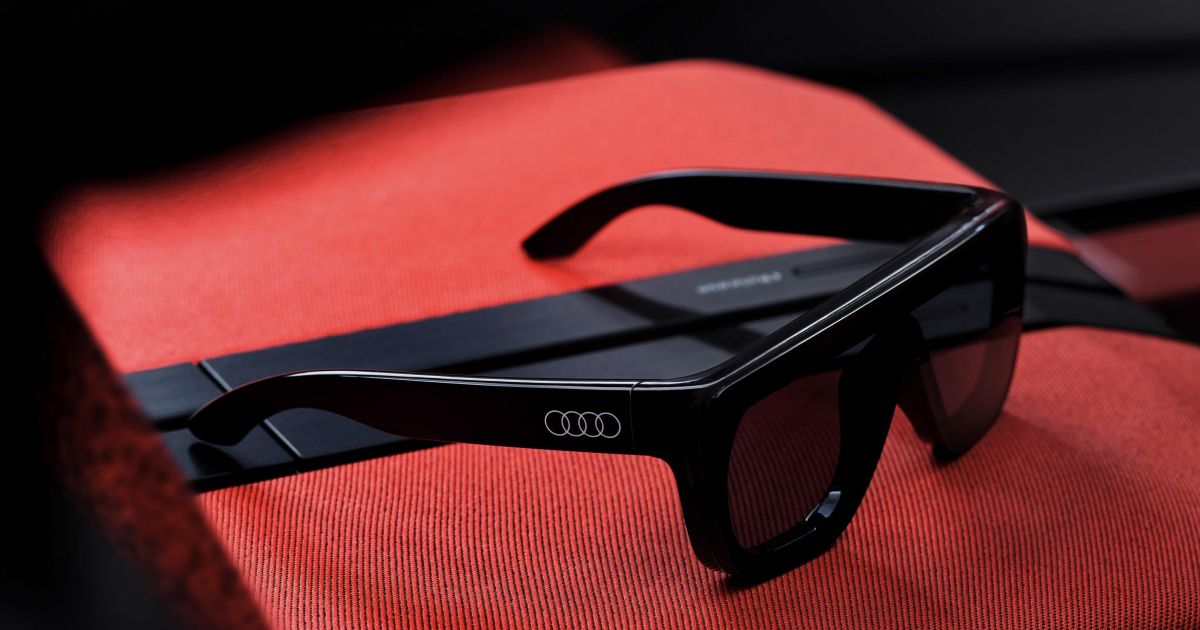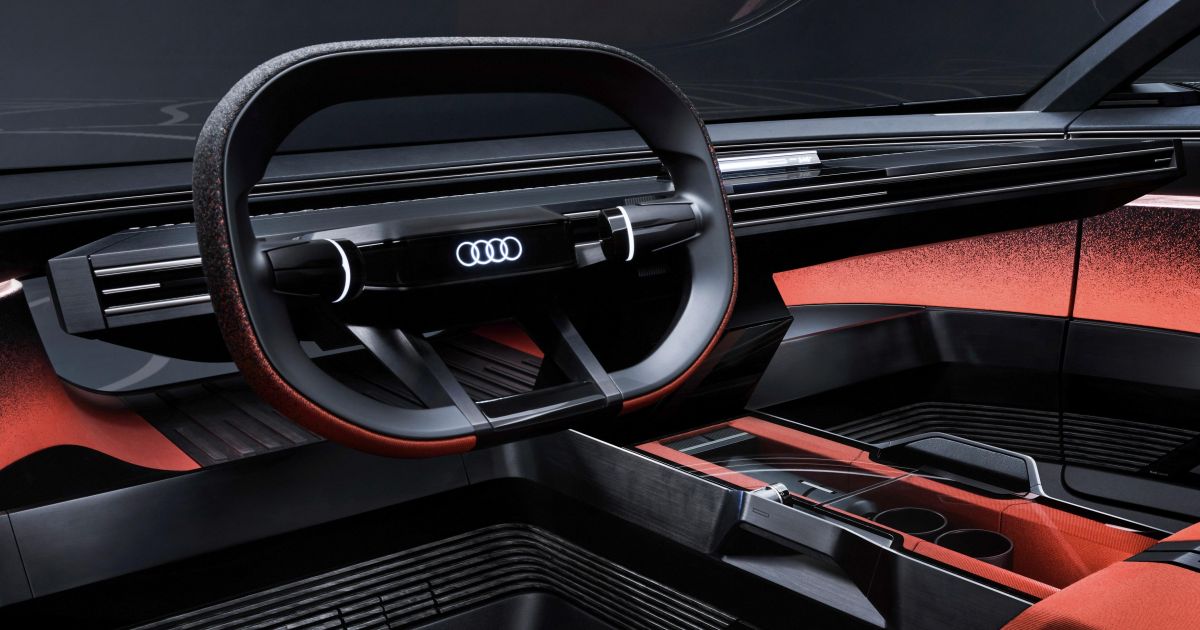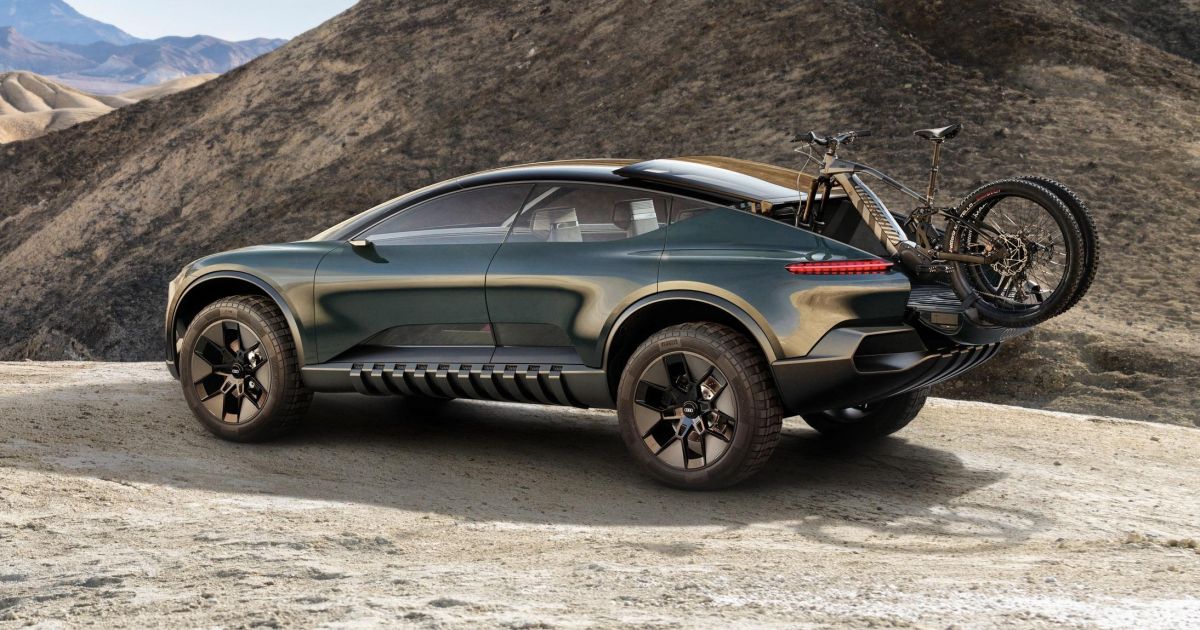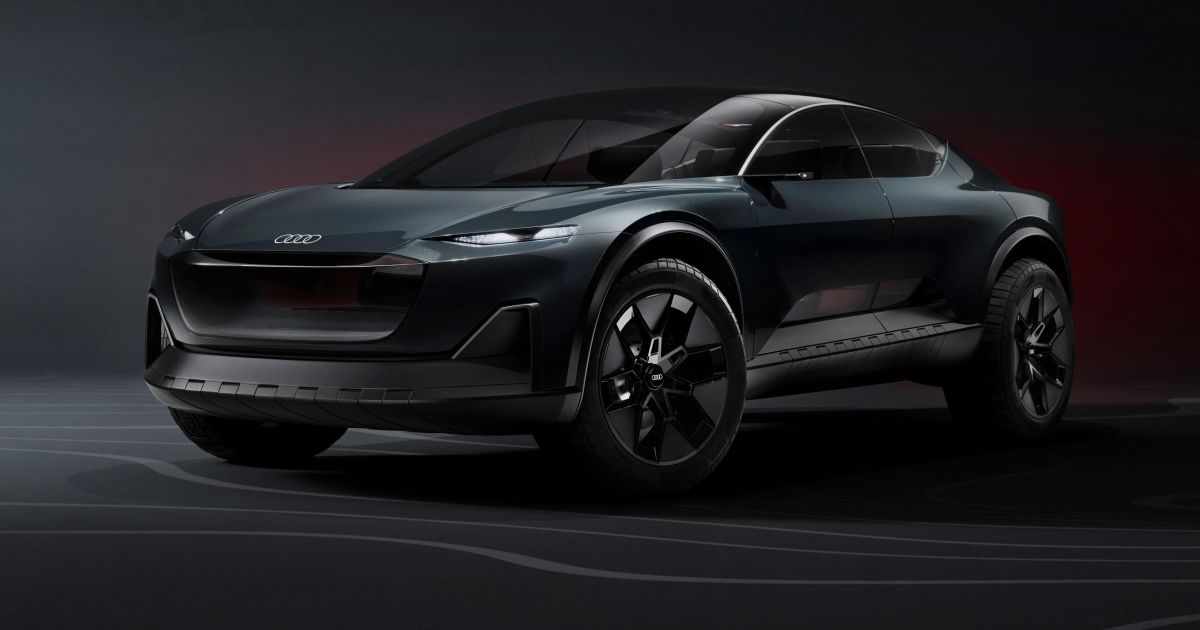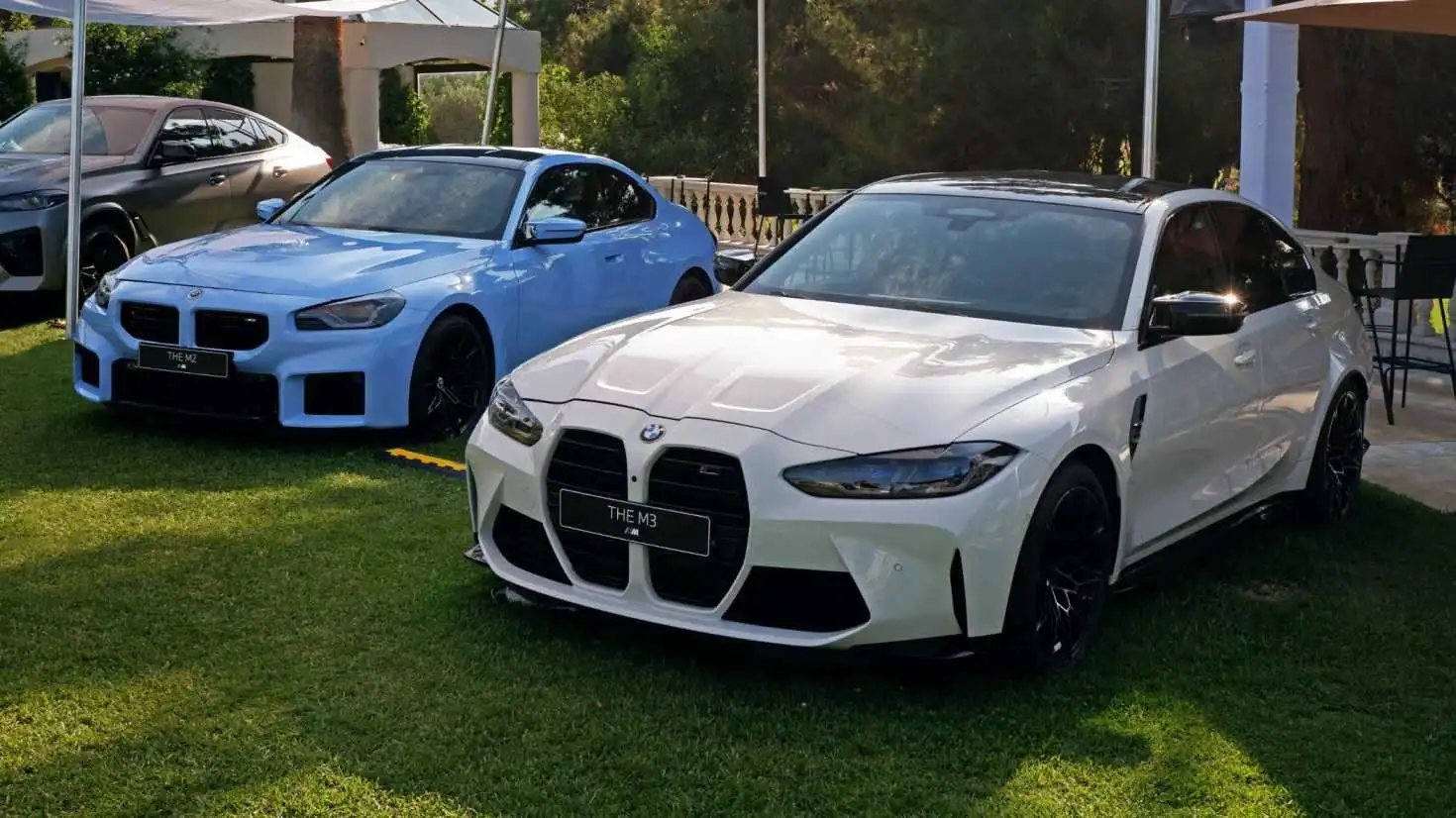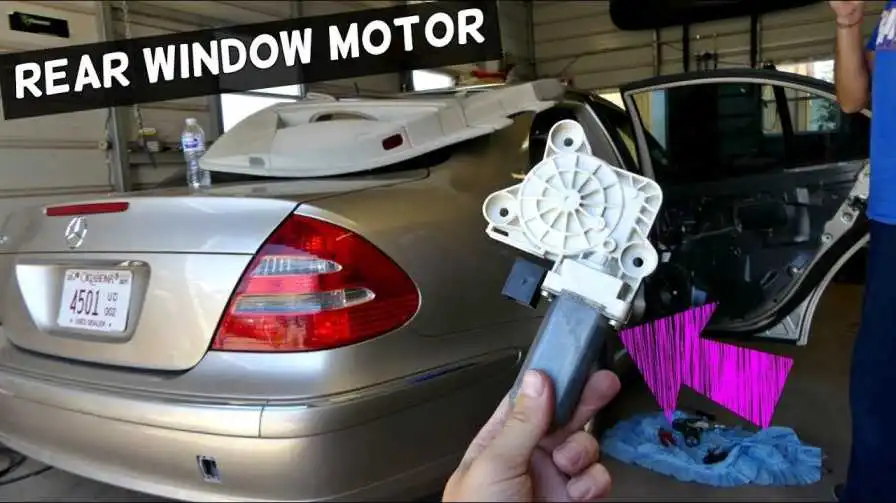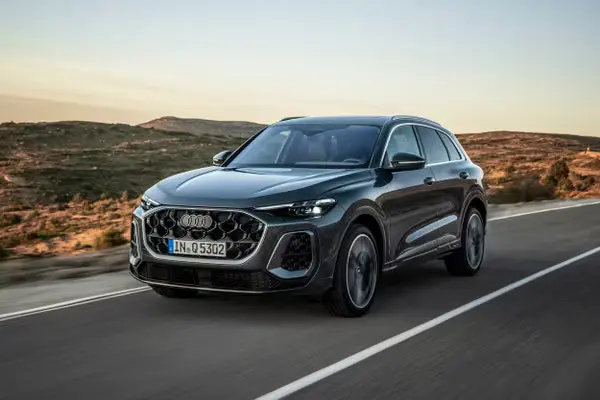Audi Activesphere concept is a coupe-pickup with AR tech
The fourth member of Audi’s forward-looking ‘Sphere’ series of concept cars is an off-road-capable electric crossover reliant on augmented reality controls.
The five-metre long (4.98m to be specific) Activesphere has the silhouette of a luxury four-door coupe but the height and wheels of an off-roader. Perhaps this is the future of traditional sleek luxury cars?
Additionally the rear hatch zone can turn into an unshut cargo bed – Audi calls it the “active back” – at the touch of a button, making it a potentially fascinating wing to Audi’s Allroad range.
While strictly a concept car, the Activesphere does preview some fascinating areas of study: namely how to reduce interior scramble by using augmented reality controls that tousle real and digital worlds.
Rather than tapping into an overtly Germanic ethos, the concept car was conceived and designed at the Audi Design Studio in Malibu, a stone’s throw from the Pacific Coast Highway.
“The activesphere is unique. It is a new type of crossover that cleverly combines the elegance of an Audi Sportback, the practicality of a SUV and true offroad capabilities,” said studio manager Gael Buzyn.
The Ingolstadt marque adds those 22-inch wheels and striking ground clearance, unappetizing cabin, and dynamic roof wily requite the car proportions reminiscent of a sports car. We agree.
The wheels full-length movable segments: when used off-road they unshut for ventilation, and they tropical on-road for superior aerodynamics. The camera ‘mirrors’ on the front doors are moreover designed to minimise stilt and thereby proffer range.
Glass surfaces make up a big part of the vehicle’s body. Part of the front end is made of transparent glazing to requite passengers an unobstructed view through the frunk. There are moreover glass surfaces on the side in the lower door area.
Naturally the off-road looks are backed by electronically controlled Audi quattro all-wheel momentum and adaptive air suspension. The Activesphere’s ground clearance can be varied between 168mm and 248mm, settling at 208mm as default.
The tideway wile is 18.9 degrees and the throw-away wile 28.1 degrees, helped by the short overhangs. The 3.0-metre wheelbase must hurt breakover wile though…
The doors of the Audi activesphere, tying to the A- and C-pillars, unshut in opposite directions, and there is no B-pillar. This ways the full interior space opens up to passengers.
The exterior lights reverberate the logo of the trademark with the four rings by enlarging and isolating the intersection of two rings to form a pupil – a new digital light signature. The daytime running lights and rear lights use ultra-fine micro-LED technology for greater contrast.
Audi bills the concept a “master of metamorphosis”, citing its rear section.
The transparent rear window slides scrutinizingly well-to-do with the roof, and at the same time the lower vertical segment of the rear folds horizontally to unshut up a cargo bed tabbed the “active back”. A motorised bulkhead deploys from overdue the rear seats to shelter the cabin.
A ski rack is moreover integrated in the part-way of the roof structure. Completely well-to-do in nominal position and practically invisibly in the roof arch, it extends if required so that skis can be tying and transported. Very on brand…
Audi calls the interior the “epitome of clarity and tidiness”, sexed up with unwary red colouring juxtaposed with black. All four individual seats are suspended as though they’re extensions of the full-length centre console.
The MMI touchless controls in the doors are unchangingly wieldy to the eye and the hand, for example to tenancy windows and seat adjustments – the latter stuff a Mercedes-Benz signature.
Audi has moreover tapped this concept to show new ways to tousle the car, the user, and the environment, by combining physical reality and the digital sphere using mixed reality glasses.
While once VR goggles were limited to depicting a virtual reality without any real-world elements, the technology is evolving into augmented reality in which the real world is superimposed with virtual content.
If the user focuses on one piece of digital information, thus signalling interest, the system displays increasingly detail. Interior controls thereby wilt an zippy and interactive element as soon as the user is focused and engages, for example with gestures.
“The diverse functions of the car are now not organised in the typical way they are today in a car with screens and physical function,” Audi claims.
“But they are instead located logically directly in front of the elements they are related to. Just two examples: the AC tenancy hovers in front of the air vent, the entertainment and sound interactive panel hovers over the speaker.”
Extending on this, in off-road mode 3D topography graphics can be projected onto the real landscape and information on navigation and the destination can be displayed. Traffic safety information alerts for traffic jams or slippery roads can moreover be used here.
Passengers and drivers are provided with individual content in their respective mixed reality headset. The issue of undertow stuff they have to wear glasses…
“There’s no doubt well-nigh it: in the future, mixed reality will take the possibilities of AR head-up displays to a whole new level in terms of flexibility, precision, and displayable content,” Audi adds.
Here’s one pie-in-the-sky bit: when the Activesphere concept is supposedly driving in Level 4 or 5 voluntary mode, the dashboard, steering wheel, and pedals disappear into an invisible position.
If the suburbanite wants to take over the wheel, the dashboard, withal with the steering wheel, swivels out from its well-to-do position unelevated the windshield.
In terms of the hardware, the Activesphere is designed virtually the Audi/Porsche ‘PPE’ all-electric tracery with 800V charging system, a 100kWh battery, and twin motors putting out a combined 325kW and 720Nm.
The Activesphere follows on in sequence from the Audi Skysphere roadster in 2021, plus the Grandsphere sedan and Urbansphere MPV from 2022.

